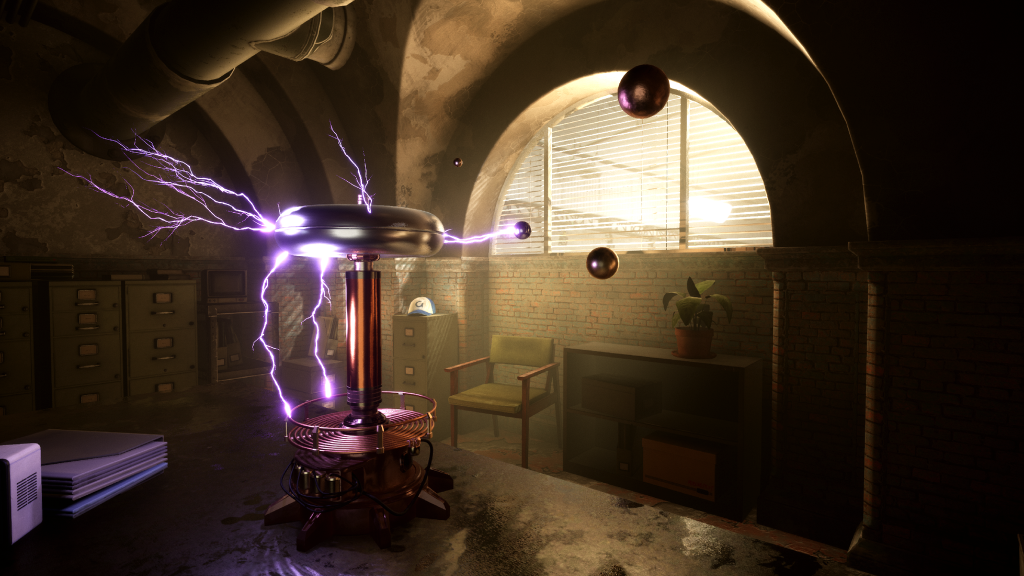Epic Games today launched Unreal Engine 4.20, enabling developers to build the most realistic characters and immersive environments across games, film and TV, VR/AR/MR and enterprise applications.
Unreal Engine 4.20 combines the latest real-time rendering advancements with improved creative tools, making it even easier to ship blockbuster games across all platforms. With hundreds of optimizations, especially for iOS, Android and Nintendo Switch - which have been built for Fortnite and are now rolled into Unreal Engine 4.20 and released to all users - Epic is delivering on its promises to give developers the scalable tools they need to succeed.
Artists working in visual effects, animation, broadcast, and virtual production can also take advantage of the latest enhancements for digital humans, VFX, cinematic depth of field and more to create stunningly sophisticated images across all forms of media and entertainment.
In the enterprise space, Unreal Studio 4.20 includes upgrades to the UE4 Datasmith plugin suite, such as SketchUp support, which make it even easier to get CAD data prepped, imported and working beautifully in Unreal Engine. These improvements are driving photorealistic real-time visualization across automotive design, architectural design, manufacturing, and more.
Key features within Unreal Engine 4.20 include:
New Proxy LOD System: Handle sprawling worlds with ease via UE4's production-ready Proxy LOD system for the easy reduction of rendering cost due to poly count, draw calls and material complexity. Proxy LOD yields huge gains when developing for mobile and console platforms.

Smoother Mobile Experience: Well over 100 mobile optimizations developed firsthand for Fortnite come to all 4.20 users, marking a major shift for easy shippability and seamless gameplay optimization across platforms. Major enhancements include improved Android debugging, mobile Landscape improvements, RHI thread on Android and occlusion queries on mobile.

Better for Switch: Epic has significantly improved Nintendo Switch development by releasing tons of performance and memory improvements built for Fortnite on Nintendo Switch to 4.20 users as well.
Niagara VFX (early access): Unreal Engine's new programmable VFX editor, Niagara, is now available in early access and will help developers take their VFX to the next level. This new suite of tools is built from the ground up to give artists unprecedented control over particle simulation, rendering and performance, for more sophisticated visuals. This tool will eventually replace the Unreal Cascade particle editor. Watch this GDC talk to learn more.

Cinematic Depth of Field: Unreal Engine 4.20 delivers tools for achieving depth of field at true cinematic quality in any scene. This brand new implementation replaces the Circle DOF method. It's faster, cleaner and provides a cinematic appearance through the use of a procedural bokeh simulation. Cinematic DOF also supports alpha channel, dynamic resolution stability, and has multiple settings for scaling up or down on console platforms based on project requirements. This feature debuted at the Game Developers Conference as part of the Star Wars "Reflections" demo by Epic, ILMxLAB, and NVIDIA.

Digital Humans Improvements: In-engine tools now include dual lobe specular/double Beckman specular models, backscatter transmission in lights, boundary bleed color subsurface scattering, iris normal slot for eyes, and screen space irradiance to build the most cutting-edge digital humans in games and beyond. All users now have access to the same tools used on Epic's "Siren" and "Digital Andy Serkis" demos shown at this year's Game Developers Conference. Check out the updated Photorealistic Human sample, which has been updated to include the static bust from "Meet Mike," revealed at SIGGRAPH 2017.

Proven, Exclusive Cross-Platform Capabilities: Developers only have to create their game once when building with Unreal Engine. Use the same content and gameplay across any device to deliver experiences anywhere players want to enjoy them.
Live Record & Replay: First shown at this year's Game Developers Conference, all developers now have access to code from Epic's Fortnite Replay system. Content creators can easily use footage of recorded gameplay sessions to create incredible replay videos.
Sequencer Cinematic Updates: Creating real-time cinematic content has never been easier with Sequencer. New features include frame accuracy, media tracking, curve editor/evaluation, anim instance control, and Final Cut Pro 7 XML import/export.
Shotgun Integration: Shotgun, one of the industry's leading production management and asset tracking solutions, is now supported in 4.20. This will streamline workflows for Shotgun users in game development who are leveraging Unreal's real-time performance. Shotgun users can assign tasks to specific assets within Unreal Engine, making the latest content and associated data easily available for review.
Improved Support for Live Broadcast: UE 4.20 now offers greater support for users leveraging the engine in broadcast, from virtual sets to virtual production to eSports. UE 4.20 includes support for AJA Video Systems' KONA 4 and Corvid 44 video cards with a plugin for HD/SDI video and audio input and output, enabling seamless integration of AR and CG graphics in live broadcast transmissions.
Mixed Reality Capture Support (early access): Users with virtual production workflows now have mixed reality capture support that includes video input, calibration, and in-game compositing. Supported webcams and HDMI capture devices enable users to pull real world green screened video into the engine, and supported tracking devices can match your camera location to the in-game camera for more dynamic shots.

Robust AR Support: Unreal Engine 4.20 ships with native support for ARKit 2, which includes features for creating shared, collaborative AR experiences. Also included is the latest support for Magic Leap One, Google ARCore 1.2 support. Be sure to check out the new FaceAR sample project that is now available with this release.
In addition, key improvements to Unreal Studio 4.20 include:
Datasmith for SketchUp: Unreal Studio's Datasmith workflow toolkit for streamlining transfer of CAD data into Unreal Engine now supports SketchUp. Save hours by automatically converting SketchUp cameras, materials, and geometry into UE assets. This plugin also includes support for layers, groups, and components, as well as units, scale, pivot points, and instances. SketchUp materials are automatically converted to a matching SketchUp material in Unreal Engine for greater simplicity.
Metadata Control: Import metadata from 3ds Max, SketchUp, and other common CAD tools for the opportunity to batch process objects by property, or expose metadata via scripts. Metadata enables more creative uses of Unreal Studio, such as Python script commands for updating all meshes of a certain type, or displaying relevant information in interactive experiences.
Mesh Editing Tools: Unreal Engine now includes a basic mesh editing toolset for quick, simple fixes to imported geometry without having to fix them in the source package and re-import. These tools are ideal for simple touch-ups without having to go to another application. Datasmith also now includes a base Python script that can generate Level Of Detail (LOD) meshes automatically.
Non-Destructive Re-Import: Achieve faster iteration through the new parameter tracking system, which monitors updates in both the source data and Unreal Editor, and only imports changed elements. Previous changes to the scene within Unreal Editor are retained and reapplied when source data updates.
For a full features list and additional details, please visit: https://www.unrealengine.com/en-US/blog/unreal-engine-4-20-released










